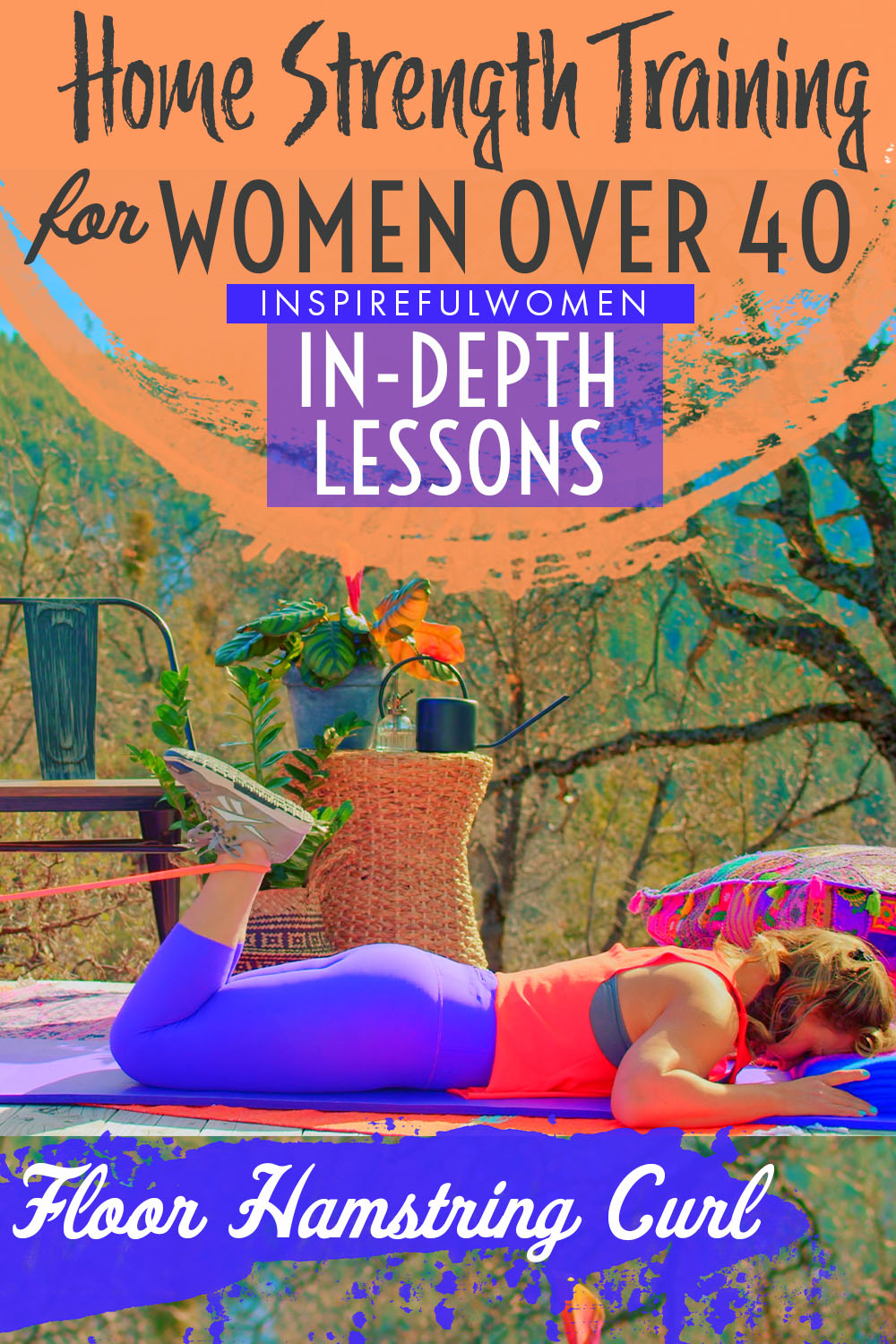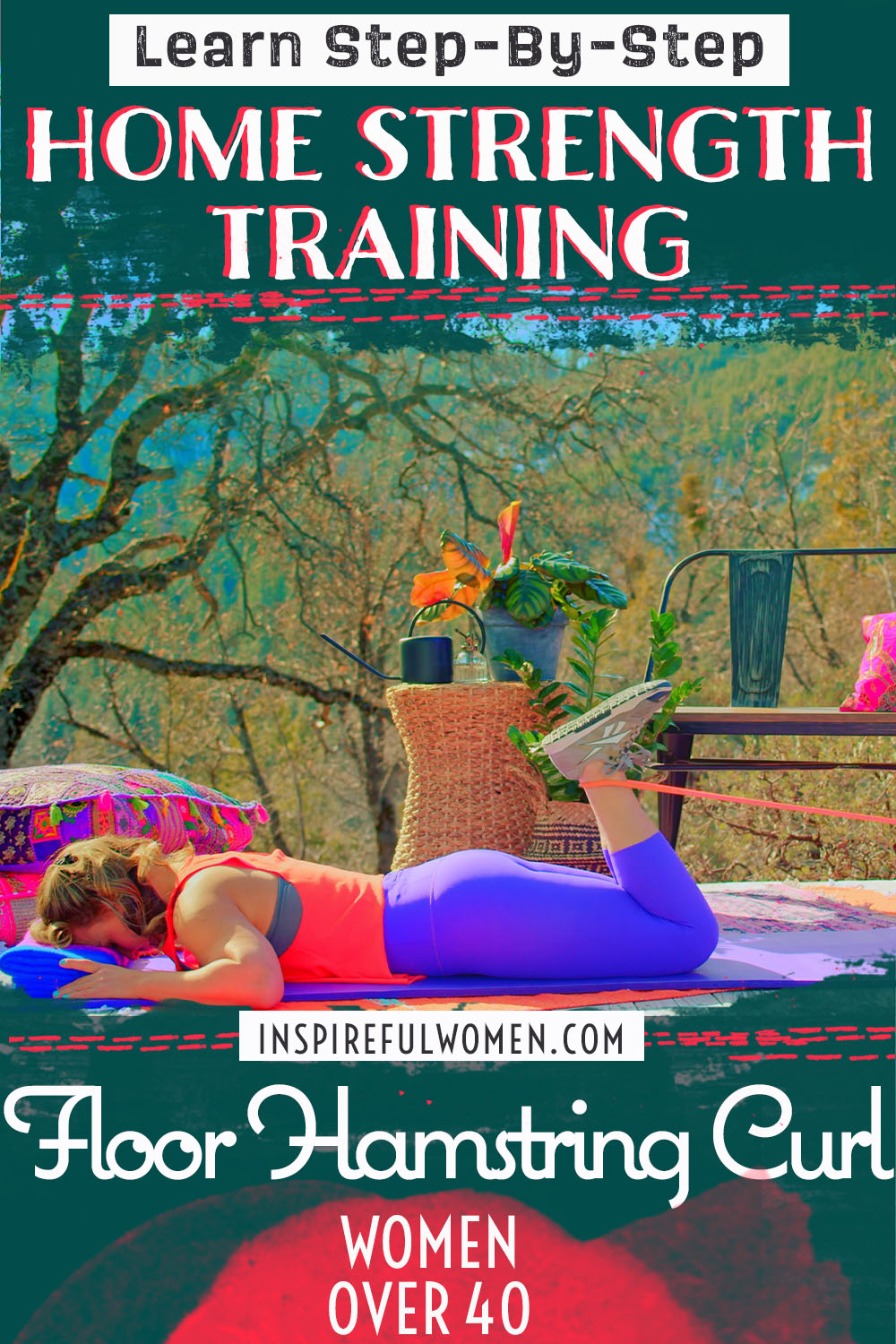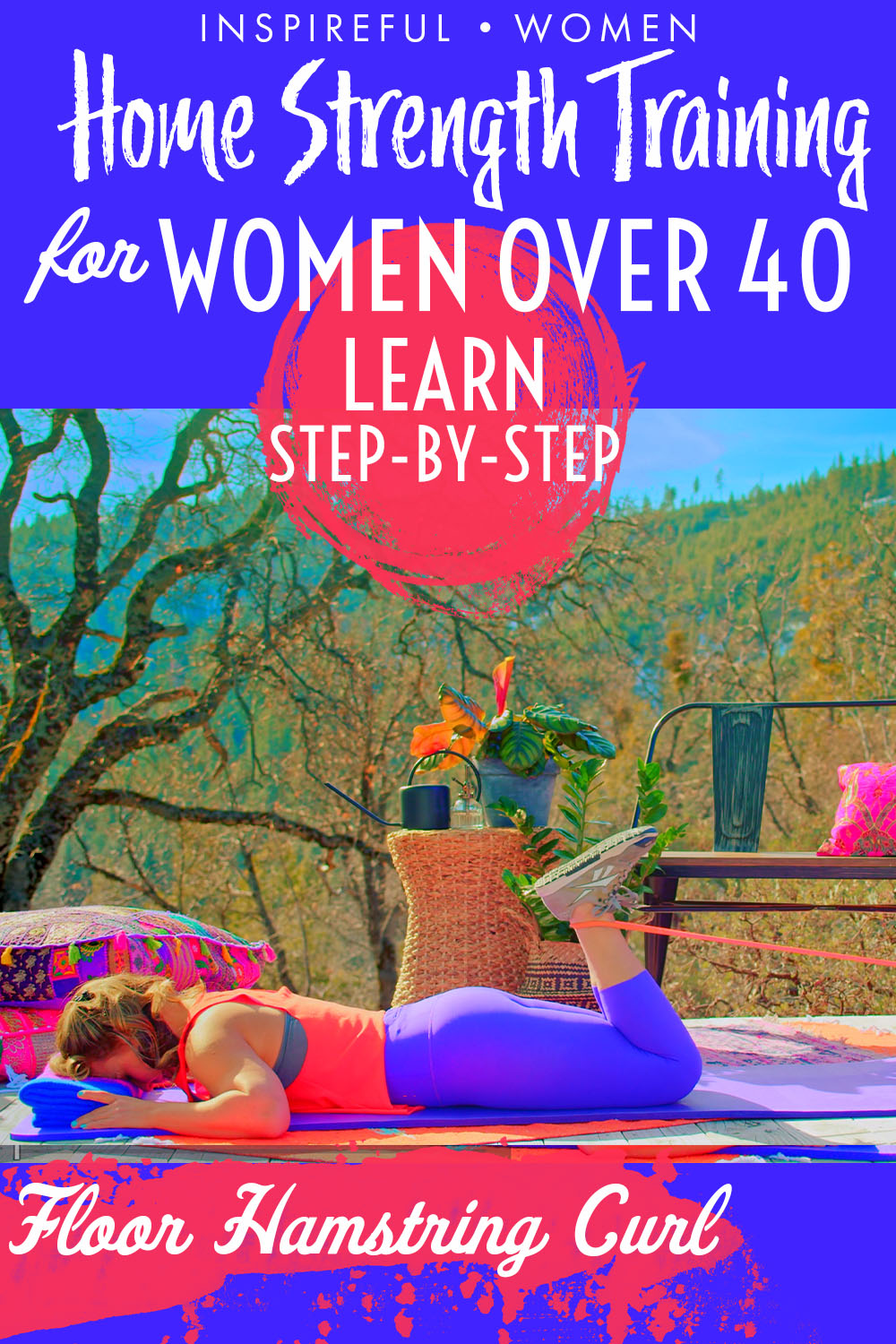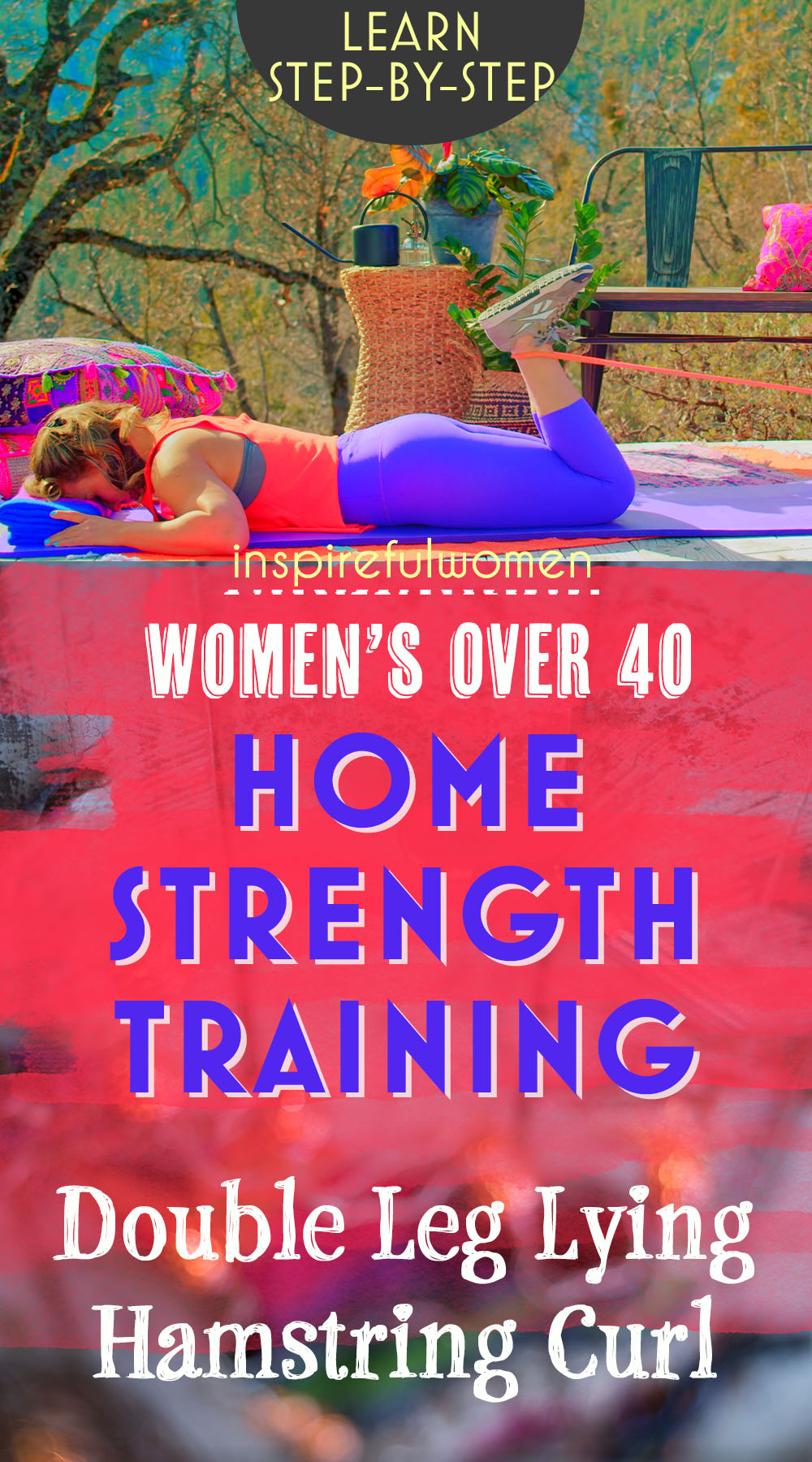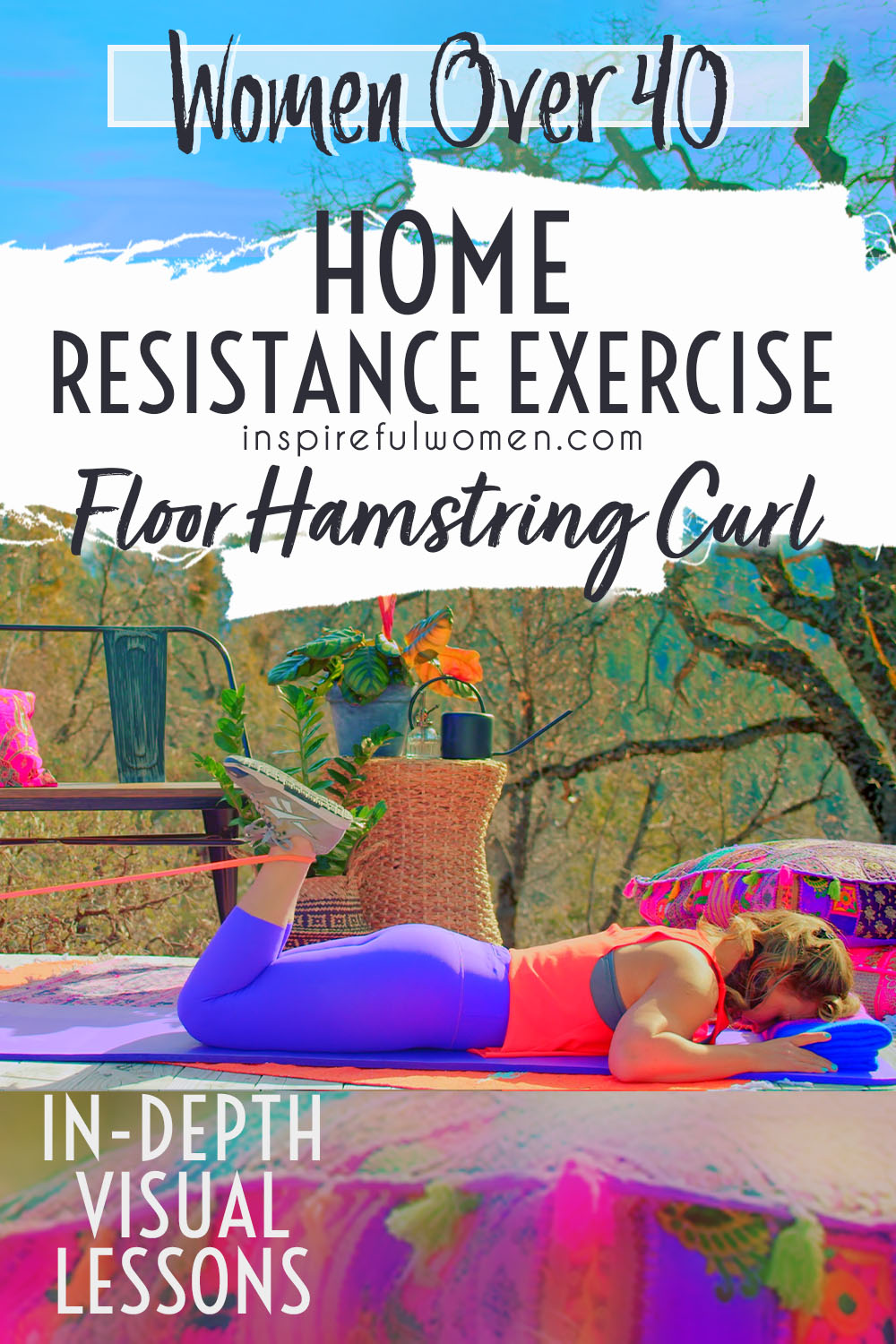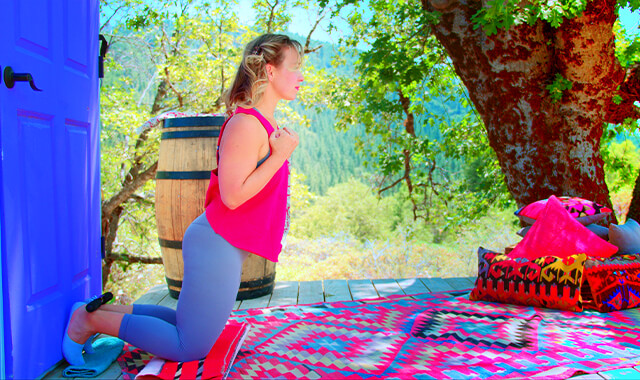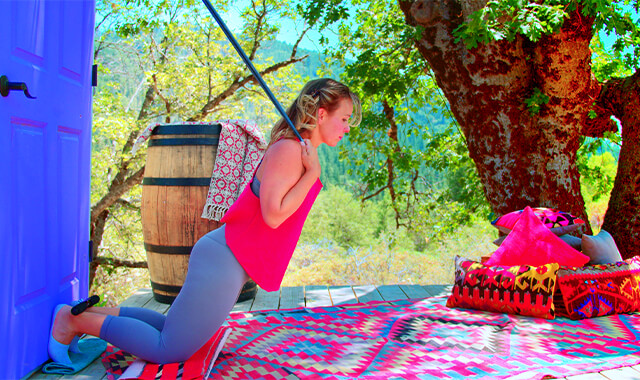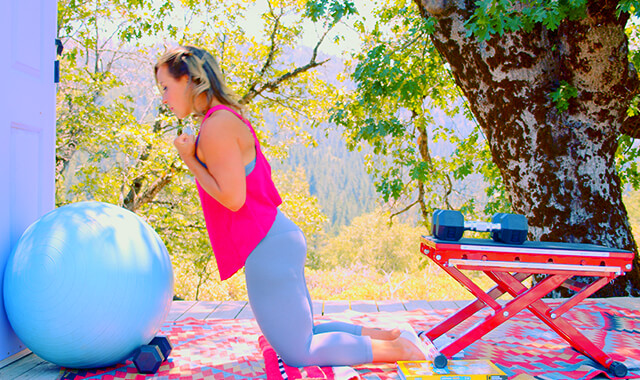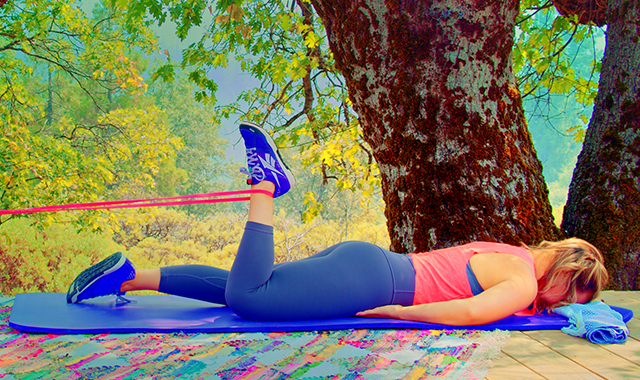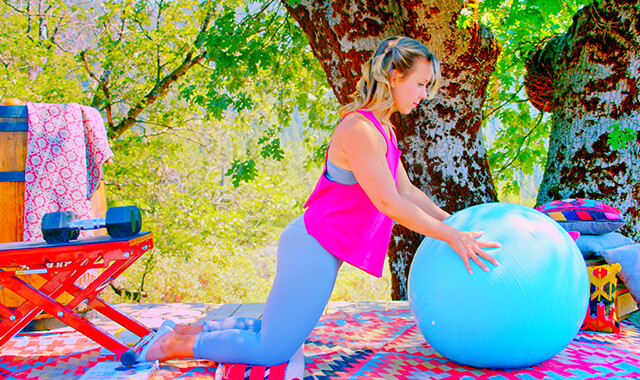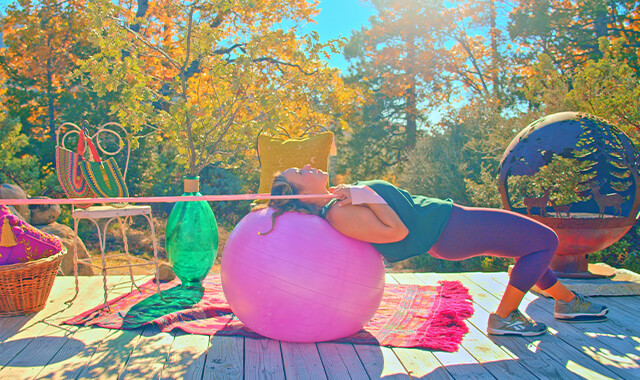Double Leg Prone Lying Hamstring Curl
How to Do Bodyweight Double Leg Curls w/ Resistance Band - Floor Hamstring Exercise | In-Depth Guide [VISUAL LEARNERS] Beginner
Proper Form, Common Mistakes, & Variations | Home Resistance Training
WHAT DO YOU WANT TO SEE?
QUICK DEMO
QUICK DEMO
MUSCLES THIS WORKS
MUSCLES
MAIN MUSCLES WORKED IN Double Leg Prone Lying Hamstring Curls
HAMSTRINGS
OTHER MUSCLES WORKED:
- GLUTES (gluteus maximus)
- CALVES (gastrocnemius)
- LOW BACK MUSCLES (lumbar)
- ABS (abdominals)
STARTING POINTERS
Starting Pointers
WHAT WE'RE DOING TODAY
ALL WE'RE DOING:
Bend your knees. K, now unbend it. Done.
The Double leg Prone Lying Hamstring Curl is an easy and effective exercise for strengthening the hamstrings – the muscles on the back of your thighs. This home exercise provides a straightforward yet effective way to build hamstring strength and improve muscle balance in your lower body without any fancy gym equipment.
This variation of the lying hamstring curl works both legs at the same time. This will decrease the activation of the hamstrings because you will have two legs pulling the band in - you will want to use a heavier band. But using two legs actually increases the core muscle activation because the torso will stabilize against more movement - both legs lifting up (when one leg is used the other leg is helping to stabilize the body).
The lying hamstring curl is a nice way to work the hamstring by focusing on its job to bend the knee in isolation - with no movement at the thigh. Pulling the heel in towards the bottom is a nice controlled squeezing movement and when the leg is returned to the starting position the muscle is contracting while it is lengthening. A lengthening contraction is also known as an eccentric contraction. Hamstrings do much of their work in daily function with eccentric contractions. The hamstrings are frequently contracting as the muscle is lengthened - this happens with walking and running.
HOW TO DO THE EXERCISE
LOOKS
HOW Double Leg Prone Lying Hamstring Curl SHAPE OUR BODY
Tones and builds the muscles of the back of the thighs, which creates a beautiful curvy shape to the back of the legs.
This also counterbalances the bulk of well-developed quadriceps.
PROPER FORM
PROPER FORM: Double Leg Prone Lying Hamstring Curl
EQUIPMENT, SETS & REPS
EQUIPMENT
Main set (3: Light/Med/Heavy)
X-Heavy Band (I recommend getting this too if you plan to use resistance bands frequently).
Mat
SUGGESTED STARTING WEIGHT FOR WOMEN:
Medium resistance bands
SETS & REPS:
2 sets of 8 reps
PACE:
Slow controlled up with squeeze at end of range then lower slowly with good control - no knee wobble.
BODY POSITION
BODY POSITION FOR THE Double Leg Prone Lying Hamstring Curl
BAND: Anchor the band low, about 4 inches from the floor is good. Anchoring the band lower will work your muscles through a larger range of motion. Loop the elastic band around your ankle (use a towel or piece of a cut pool noodle to avoid it digging in). It can help to tie a loop at the end of the band so that it will not slip off. The anchor should be at a height that prevents the band from rolling up your shin.
BODY STANCE: Lie face down on a mat. In this position, it is common to feel some pressure or discomfort in your low back - to protect your back you can pull your belly button up towards your spine to activate your abdominal muscles and hold your spine in a neutral position and/or place a folded towel under your ankles. If neither of these options work put a folded towel under your belly. Lift your belly button towards your spine and gently push your pubic bone to the floor. Your glutes should be relaxed. Put a folded washcloth (or hands) under your forehead so your neck is in a neutral position.
LEGS: Straight on the floor, a comfortable distance apart. Your ankles should be relaxed. Bending your ankle up (bringing the toes closer to the shin or dorsiflexing) will decrease the contribution of your calf muscle (gastrocnemius) - yay 2 for 1!
ARMS: Relaxed, under your forehead or under hip bones to monitor stability.
HOW TO DO
HOW TO DO Double Leg Prone Lying Hamstring Curl
CUE: The goal is to feel resistance through as much of the movement as is possible. Position yourself so you feel tension through the largest range of motion.
Pull your heels towards your bottom slowly.
At the end of the range squeeze your hamstrings
Lower your heel slowly, slowing the pull of the band.
HOW TO SAFELY GET OUT OF THE EXERCISE
Straighten your knees and release the band.
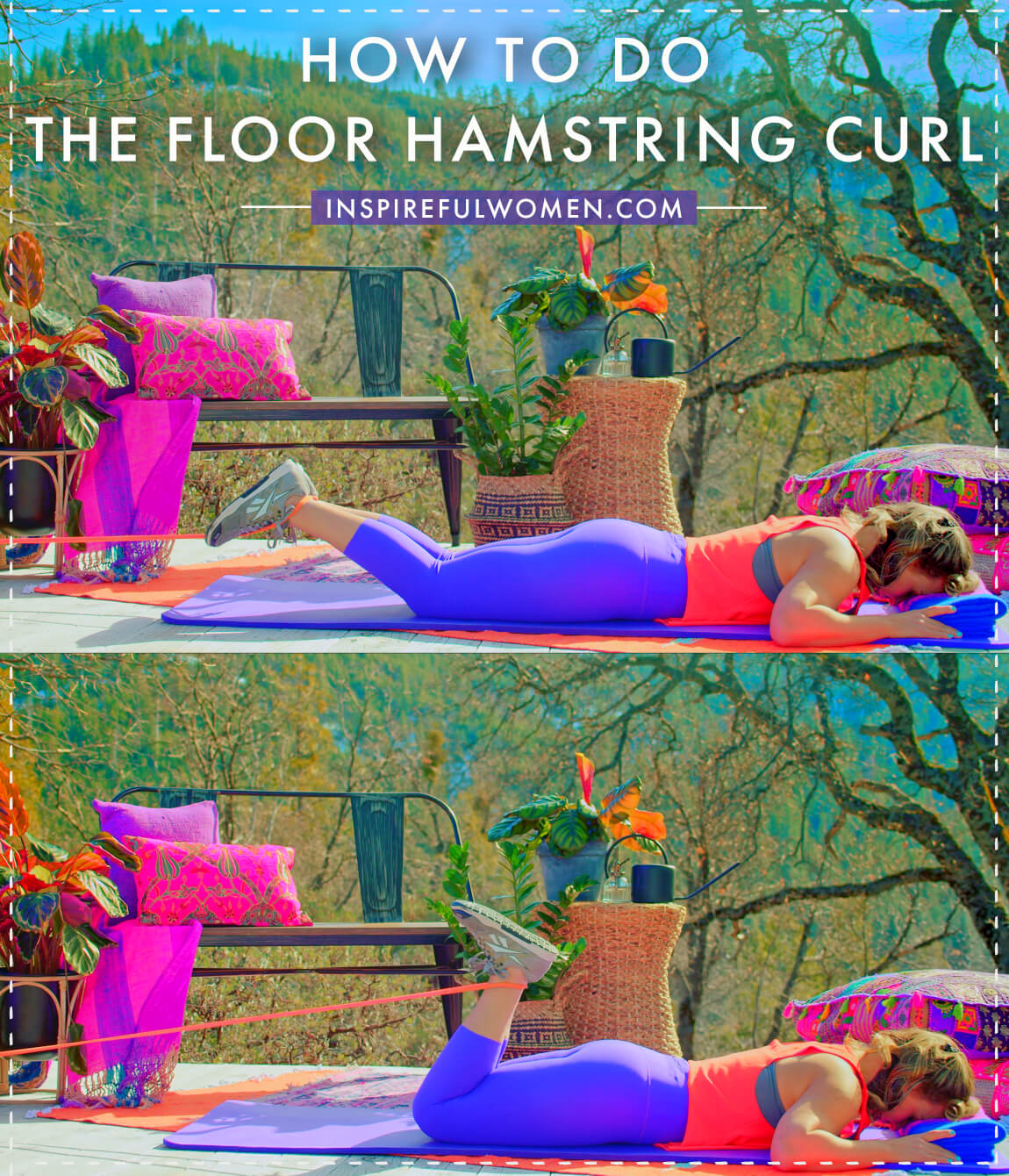
COMMON MISTAKES
COMMON MISTAKES
WHAT TO AVOID WITH Double Leg Prone Lying Hamstring Curls
KEY TIP:
Guess what? Good news! Many avoids are the same for most movements. Once you learn the basics, there's really only a few extra avoids for each individual movement.
1. Avoid Lifting Your Hips
AVOID: Avoid lifting your hips as the leg is pulled in.
WHAT TO DO:
- This is an attempt to use the hip flexor to help get your foot closer to your bottom.
- Keep the pubic bone pushed down to the floor, and your belly button pulled up towards the spine.
- If needed, place your hands under the front of your hips (at hip crease) to monitor for movement.
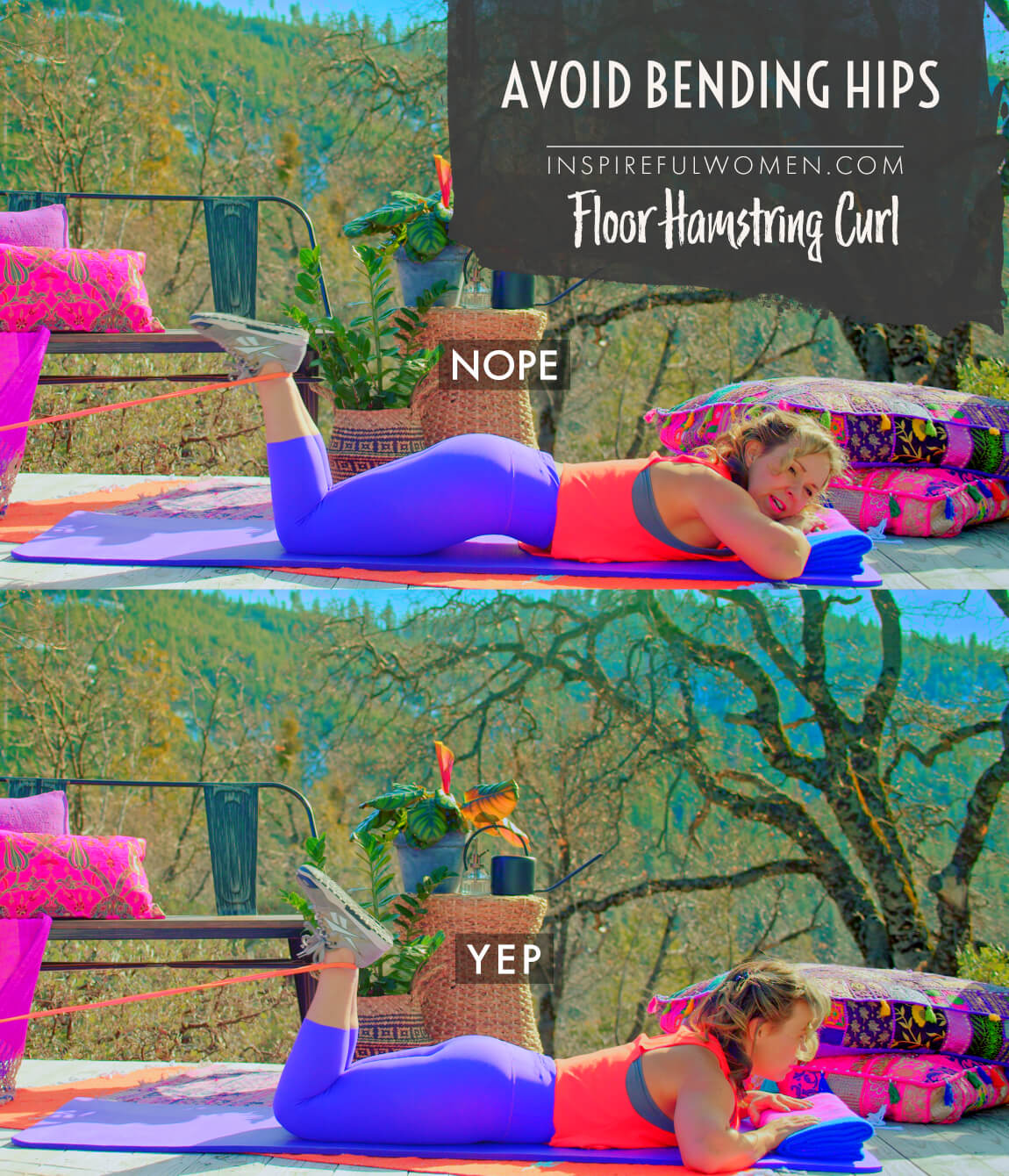
2. Avoid Straightening Legs Completely
AVOID: Avoid straightening your legs completely if you get pain in knees.
WHAT TO DO:
- Concentrate on trying to bend the knee using only the lower part (closer to the knee joint) of the hamstring. You can feel the bulge right in the middle of the hamstring, that is the short head).
- Try to let the glutes kick in naturally, usually at about 110 degrees of knee flexion - which is a little past the point where the foot is straight up.

3. Avoid Tightening Glutes Before You Start Knee Bend
AVOID: Avoid tightening the glutes before you begin to bend your knee.
WHY NOT?
- This will help to activate the short head of the biceps femoris.
- Tightening the gluteus maximus may activate the parts of the hamstrings that cross the hip joint without letting the short head of the biceps femoris (one part of one of the hamstring muscles) contribute.
WHAT TO DO:
- Concentrate on trying to bend the knee using only the lower part (closer to the knee joint) of the hamstring. You can feel the bulge right at the middle of the hamstring, that is the short head).
- Try to let the glutes kick in naturally, usually at about 110 degrees of knee flexion - which is a little past the point where the foot is straight up.
VARIATIONS
VARIATIONS
VARIATIONS OF Double Leg Prone Lying Hamstring Curl
Point Toes Out
Point Toes Out Hamstring Curl
Turning the toes outward will target the biceps femoris (this is the more outer area of your hamstrings).
Point Toes IN
Point Toes In Hamstring Curl
Turning your toes inwards will target the semimembranosus, semitendinosus (these are the more middle and inner portions of your hamstrings.
WHAT WE'RE DOING TODAY
WHAT & WHY
BENEFITS OF TRAINING THE HAMSTRINGS
WHAT
WHAT WE'RE DOING TODAY
The lying hamstring curl works the hamstring muscles while lying on your stomach - face down, this is also called the prone position (I love laying down exercises don't you?), using a resistance band mounted low to the ground to work the hamstring muscles.
The hamstring can move the leg in two ways - it helps to move the thigh back (extension) and it also bends the knee. In the prone/face down position, the hip does not move and the focus is on using the hamstring muscles to bend the knee. You can try to isolate the muscle and really work on strength and control.
This position allows for working the middle and lower portions of the hamstrings that act to bend the knee (knee flexion) without actively extending the hip.
Who cares if the hip joint is creased or isn't? What's the dif?
When the hamstring is in neutral it will be stronger when bending the knee, so a nice way to work the hamstring muscles.
The use of an elastic band facilitates training the muscle eccentrically (the muscle being lengthened under load/resistance, a great way to train muscles.
LOWERING LEG/UNBENDING KNEE JUST AS IMPORTANT IN THIS EXERCISE
The hamstrings don't just bend the knee or move the leg back behind the body.
The hamstrings also do a lot of work just slowing down the movement of the leg FORWARD by the quadriceps (the quads pull the leg forward forward by flexing the hip & straightening the knee). More on the quads + hamstrings connection in the why area, but for now:
The hamstring has to counter the action of the quadriceps by acting as a brake to slow down the movement. This exercise helps to work to the ability to control the movement as the knee straightens.
It is important to know that this part of the exercise, when the band is pulling the foot back down to the ground, is as important as the first part of the exercise - when you are squeezing the heel towards your bottom. Strive for very smooth control on the way down - the lower leg (foot) should not wobble in or out as the knee is straightened to the starting position. Think of your hamstring muscles controlling the lowering, rather than just letting the lower leg fall back down.
WHY BOTHER DOING IT?
WHY
WHY DO WE EVEN CARE?
Why do this particular movement?
CREATE MUSCLE BALANCE WITH THE QUADS
The most important job of the hamstrings is to work in coordination with the quadriceps (muscles on the front of the thigh). Together they (hams & quads) control the movement of the leg, protect the knee from impact, and stabilize the knee.
These 2 muscle groups are antagonists - this means that they do opposing actions (ie hamstrings bend the knee, quads straighten knee. Hamstrings pull leg behind body, quads pull leg in front of body). The body is full of pairs of antagonists - the muscles usually lie on opposite sides of a bone and they move the joint in opposite directions - a common example is the biceps of the arm - it bends the elbow, and the triceps which straighten the elbow. Even though antagonists have opposing actions, they work together to control movement and to stabilize the joint. When one of the pair of muscles is disproportionately stronger than the other, the weaker of the two is at an increased risk for injury.
Many people have quadriceps muscles that are much stronger than their hamstrings. It is common and natural for the quads to be stronger - about 30 -50 percent stronger than the hamstrings, but when they become more than 50 percent stronger, damage to the muscles or joints can occur. Unfortunately, most people do more exercises for their quads than they do their hamstrings, creating an imbalance between the two. This can happen without you even knowing it - many exercises like lunges and squats will end up just training the quads more.
It is important to include exercises that specifically train the hamstrings to help prevent or correct an imbalance.
SPECIAL FOCUS ON MUSCLES THAT ONLY BEND THE KNEE
This hamstring exercise does not involve moving the thigh back (thigh remains still while lying down), so it really concentrates on the function of bending the knee without any movement at the hip. The short head of the biceps femoris muscle is one part of one of the hamstring muscles that only bends the knee and does not help to pull the thigh back. The prone hamstring curl helps to target the short head of the biceps femoris. Exercises that involve both hip extension and knee flexion - for example stability ball hamstring curls, or hamstring sliders, make it difficult to tell if you are activating the short head of the biceps.
EVERYDAY LIFE
EVERYDAY LIFE &
MUSCLE FUNCTION
HOW WE USE OUR HAMSTRINGS IN EVERYDAY LIFE
If you'll care to have a look-see below, you'll find that we use our hamstrings in a ton of basic everyday activities.
1. BEND THE KNEE (aka flex the knee)
- Pushing the elevated leg rest of a recliner down
- Scooting a chair in to the table
- Pulling your foot back to tie your shoe
- Bending your knee to get into position to kick a ball
2.PULLS THE LEG BACK (aka extends the hip)
All the hamstrings except for the short head of the biceps femoris do this - it does not cross the hip joint.
- Running up hills
- Walking up stairs
- Getting up from sitting
- Getting up from the floor
- Walking up - especially up hills
- Moving your leg back to kick a ball
3. CONTROLS MOVEMENT OF LEG
Works with the quadriceps to control the movement of the leg
-
- Walking
- Running
- Jumping
- Kicking
- Squatting
4. WORKS WITH QUADS TO PROTECT KNEE & HIP JOINTS
Works with the quadriceps to keep the knee and hip stable to protect the joints from damage during standing and moving
- Standing
- Balancing
- Standing on a ladder with the weight on one leg to reach for painting/window washing
- Walking across a log
- Jumping
- Running
- Going up and down stairs
SCIENCY STUFF
SCIENCY STUFF
SPIFFILICIOUS FACTS ABOUT MUSCLES & MOVES
We know the hamstrings are somewhere on the back of our legs, and they don't involve pig meat. But what do they actually do? What function do they serve as we go about daiy life moving our body?
Our hamstrings are a group of three muscles:
- biceps femoris (outer ham)
- semitendinosus (middle ham)
- semimembranosus (inner ham) muscles.
MAIN THING HAMSTRINGS DO:
Together they work to
1. straighten the hip (extend the hip - this means essentially to go from a crease in hip to no crease and taking the thigh behind the body)
2. bend the knee (called flexing the knee)
Strong hamstrings are needed to balance the strength of the stronger quadriceps muscles. The main role of the hamstrings is to decelerate (slow) the action of the quadriceps in walking, running, and jumping. The hamstrings are active in running or walking up hills.
The muscles of the leg work together as shock absorbers and stabilizers of the knee - to prevent damage to the cartilage and soft tissues. The hamstrings protect the knee joint from impact and work to stabilize the knee.
PROTECTING KNEE JOINT THROUGH MUSCLE BALANCE
Many exercises focus on increasing the strength and size of the quads, so it is important to include exercises for the hamstrings so you do not create an imbalance around the knee joint.
The hamstring has to be strong enough so that the combination of all the muscles that cross the knee joint can control the motion to protect the joint surfaces and the ligaments (the hamstring plays a big role in protecting the anterior cruciate ligament from damage by decelerating the movement of the lower leg).
STRONGER POSITIONING TO WORK LOWER/MIDDLE PART OF HAMSTRINGS
Working the hamstrings with the hip in neutral (as this particular exercise does) allows you to work the lower portion of the hamstring that crosses the knee joint.
If the hip is bent then the hamstring is lengthened over the hip joint, so when the knee is extended the muscle will be in a weaked state (lengthened over both joints - so passive insufficiency). Muscles are their strongest in the middle of their range - not shortened or lengthened too much.
When the hip is in neutral, the hamstring will be stronger be able to bend the knee from a straight knee position because the hamstring is not lenghtened over the hip.
If the hip is in extension while the knee is flexed (like the donkey kick positionng) then the hamstring will be shortened over both joints - active insufficiency, and weaker - the gluteus maximus will kick in to do more of the hip extension, and the hamstring will flex the knee.
ALLLL MUSCLES & WHEN
ALL MUSCLES WORKING & WHEN DURING THE Double Leg Prone Lying Hamstring Curl
The core muscles act to stabilize the pelvis and back while the hamstrings act to bend the knees and pull the feet towards the bottom.
The entire hamstring muscle works to bend the knee and pull the heels toward the bottom.
With the hip in an extended position the lower portions of the hamstring will be emphasized, especially the short head of the biceps femoris, as it does not cross the hip joint (cannot contribute to hip extension).
As the knees approach full flexion the upper portion of the hamstrings and the gluteus must contract to prevent hip flexion at the end of the range of motion.
The hip flexion is usually due to lack of abdominal activation to stabilize the pelvis and/or hip flexor tightness.
PIN IT FOR LATER!
